Ethics In Financial Services Insights
Overconfident and Knowledgeable Investors May Be At a Higher Risk of Investment Fraud
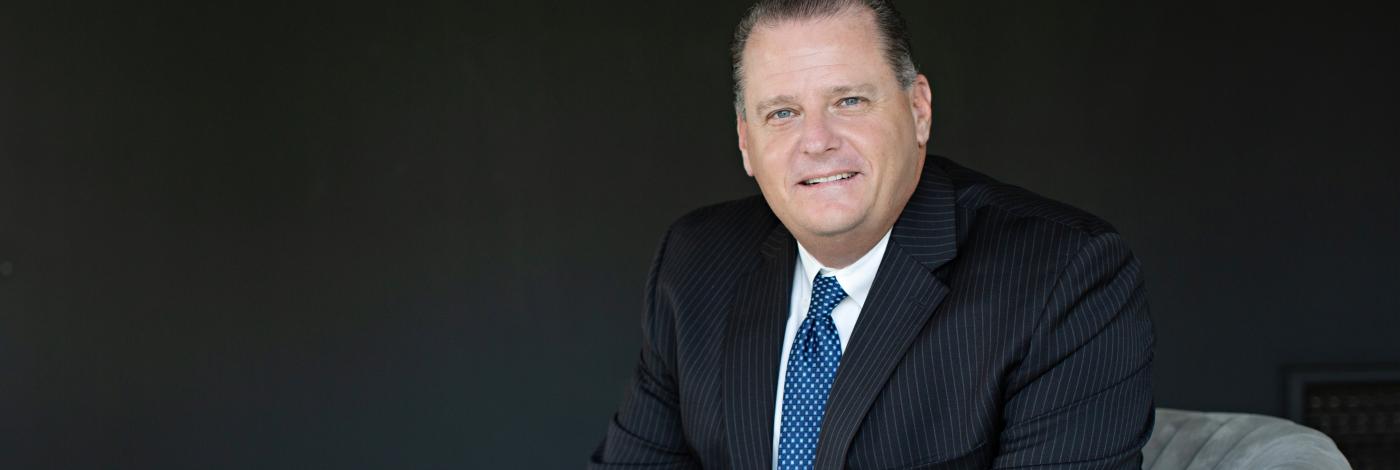
DOMARINA OSHANA: Tell us about your dissertation. What makes you so passionate about researching investor fraud vulnerability, and why did you put your stake in this particular topic?
CHRISTOPHER RAND: Having been a financial planner for over 25 years, I have unfortunately witnessed way too many cases of fraud and attempted fraud. Whether the fraud is a huge pyramid scheme like the Bernie Madoff Ponzi affair, a telemarketer overseas who swindles a senior citizen out of their retirement account, or a family member looking to take advantage of their parents, investors need to be protected. Financial planners may spend much of their career helping a family plan for and save up a nice retirement nest egg, only to see it destroyed by unscrupulous actors. While it is common to focus on the financial loss victims of fraud experience, we often forget the emotional toll on a fraud victim. They may experience feelings from discouragement to depression over being victimized. While it may not be possible to eliminate all fraud risk for an individual, it is possible to reduce their susceptibility to being a fraud victim. Investigating ways to make an individual’s financial plan more secure through reducing fraud risk vulnerability is where my interest came from.
DO: What impact do you anticipate your dissertation will have in the financial services industry and/or the field of financial and retirement planning? In what ways do you think it might inform ethical behavior and/or encourage dialogue on ethics in fraud prevention?
CR: This research informs investors and professionals about some of the risks individuals face as it relates to investment fraud vulnerability. The topic of fraud has become more common in trade publications, helping increase advisor awareness. There also seems to be an increase in training by firms on what advisors need to watch out for on topics from elder abuse to email and wire fraud.
While training and education may be an important tool to reduce fraud vulnerability, the topics taught should be fraud-specific. It is not enough to increase an individual’s education level about investing—the new knowledge should include specific ways to identify and prevent fraud. My research revealed a surprising finding: knowledgeable investors, as well as overconfident investors, tend to have an elevated vulnerability to investment fraud risk through exhibiting behaviors and attitudes common in fraud victims. The research defined a knowledgeable investor as an individual who scored better than average on a 10-question investment quiz, and an overconfident investor as someone whose confidence level in their abilities was above average but scored below average on the same quiz. Employees and advisors in financial services likely have a higher financial knowledge than those outside of the financial services industry, yet that knowledge may not be enough to detect and deter fraud for their clients.
The advisor-client relationship is many times centered around trust as the advisor strives to handle the relationship with honesty and transparency. That trusting relationship may place an overconfident investor at a higher degree of risk if an unethical advisor was to mishandle that trust. The overconfident investor may be more likely to overlook items and less likely to do their research. Advisors can be transparent with these vulnerable investors about ways clients can protect themselves from fraud, like using a third-party custodian to hold client assets and being truthful about their work experience and credentials.
DO: In your dissertation, you found elevated investment fraud risk for knowledgeable investors is suggestive that traditional financial literacy requires modification to include information about fraud risks. How can advisors best communicate and educate investors about fraud prevention and awareness?
CR: Just because an investor is knowledgeable, you cannot assume they are at a lower risk for fraud. Knowledgeable investors may be at an even higher risk if they believe their knowledge level to be adequate and ignore fraud signals, which they may have paid attention to had they possessed a lower level of confidence.
People learn differently, so it’s best to communicate with the client through the best medium for them and bring up the fraud topic frequently. Overconfident investors are also at a higher risk of fraud vulnerability, and do not likely know they are overconfident. Advisors and employees of firms may be aware of their client’s overconfidence and, armed with the knowledge that the overconfident investor is more vulnerable, they may be able to act as their guardian and help protect their assets held at the firm. The research found overconfident investors to have a high level of confidence in the effectiveness of U.S. financial market regulation and to have a high level of comfort in making investment decisions. These two attitudes indicate an overconfident investor will assume regulation is there to protect them, make their investment decision, and move on. Advisors and firm employees should be on the lookout for attempted fraud, like an email solicitation for money that came from a fraudster, as opposed to the overconfident client.
DO: How do you explain your dissertation to someone not in your discipline? Why does it matter, and what is the key takeaway you would like to impress upon them?
CR: Investment fraud continues to rise, and all investors are at risk. Simply increasing your investment fraud knowledge is not sufficient to reduce your vulnerability to investment fraud. Obtaining fraud-specific education is a must to help protect yourself and reduce your vulnerability. Fraudsters will continue to find new and innovative ways to separate you from your hard-saved money. Take the time to educate yourself and keep up with the latest and most pervasive fraud techniques.
DO: What plans do you have for future research and/or education in fraud prevention and awareness?
CR: Fraud research continues to be limited. A primary research project focused on actual incidents of fraud would be a great way to build on this research and could explore additional attitudes and behaviors that may be common in those victims. That knowledge could provide additional evidence about the impact knowledge and investor confidence has on someone’s investment fraud vulnerability. I hope to publish my findings in a peer-reviewed journal and plan to make myself available to the media to help get the word out about investment fraud vulnerability. I have a unique background that may be of interest to the media now that I have completed the PhD I have taught financial planning courses at U.C. Berkeley and San Diego State University and have over 25 years of experience working as a financial planner. That unique background may pique consumer media interest and help provide the platform needed to discuss investment fraud vulnerabilities.
DO: How has The American College of Financial Services prepared you to help individuals and companies be more sensitive to ethical issues and think more critically about solutions for the benefit of society?
CR: The process of obtaining a PhD from The College changed how I approach challenges. I think more critically when working on projects, challenging things I assume to be true. Historically, I may have quickly researched an item with maybe one source, whereas now I will typically use multiple sources to confirm if my understanding is accurate.
Diversity, Equity & Inclusion Insights
Celebrating Black History in the Making
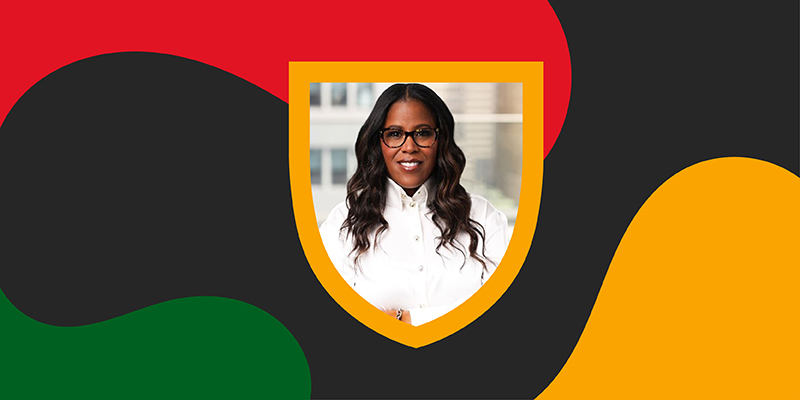
Thasunda Brown Duckett
President and Chief Executive Officer, TIAA
Thasunda Brown Duckett is President and Chief Executive Officer of TIAA, a Fortune 100 provider of secure retirements and outcome-focused investment solutions to millions of people working in higher education, healthcare, and other mission-driven organizations. Duckett joined TIAA after serving as Chief Executive Officer of Chase Consumer Banking, where she oversaw a banking network with more than $600 billion in deposits and 50,000 employees. Previously, she was the CEO of Chase Auto Finance, one of the leading U.S. providers of auto financing, and National Retail Sales Executive for Chase Mortgage Banking, where she managed 4,000 mortgage bankers. Earlier in her career, she was a Director of Emerging Markets at Fannie Mae, where she led the implementation of national strategies designed to increase homeownership among Black and Hispanic Americans. She also founded the Otis and Rosie Brown Foundation in honor of her parents to recognize and reward people who use ordinary means to empower and uplift their community in extraordinary ways. She is passionate about helping communities of color close achievement gaps in wealth creation, educational outcomes, and career success.
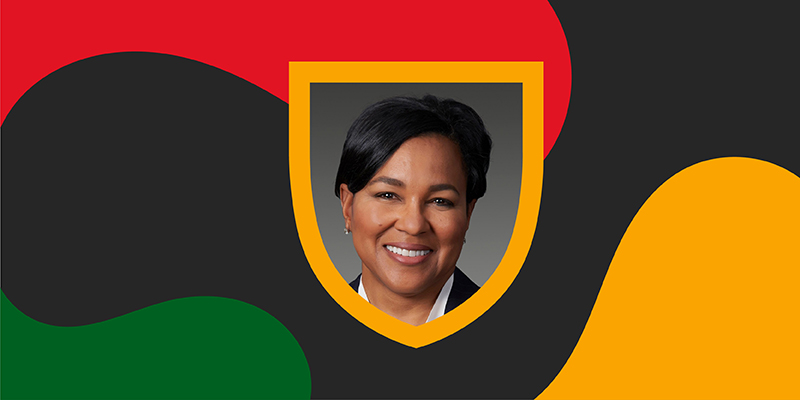
Rosalind Brewer
Chief Executive Officer, Walgreens Boots Alliance, Inc.
Rosalind Brewer joined Walgreens Boots Alliance as Chief Executive Officer in March 2021. She also is a Director on WBA’s Board. Brewer most recently served as Chief Operating Officer and Group President at Starbucks from October 2017 to January 2021. Prior to Starbucks, she served as President and Chief Executive Officer of Sam’s Club, a membership-only retail warehouse club and division of Walmart, Inc., from February 2012 to February 2017. Before joining Walmart, she served as President of Global Nonwovens Division for Kimberly-Clark Corporation, a global health and hygiene products company, from 2004 to 2006, and held various management positions at Kimberly-Clark beginning in 1984. She is currently ranked #6 on Fortune’s 50 Most Powerful Women in Business and was named one of the 25 most influential women by the Financial Times in 2021.
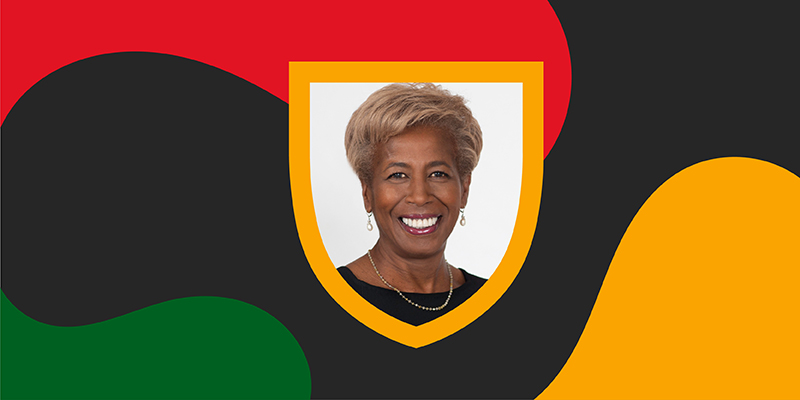
Sharon Bowen
Chair of the Board of Directors of the New York Stock Exchange
Sharon Bowen joined the Intercontinental Exchange, Inc. Board of Directors in December 2017. She serves as the Chair of the Board of Directors of the New York Stock Exchange, our subsidiary, and serves on the boards of certain NYSE U.S. regulated exchanges. In addition, she co-chairs the NYSE Board Advisory Council. She served as a Commissioner of the U.S. Commodity Futures Trading Commission (CFTC) from 2014 to 2017. During that time, she was a sponsor of the CFTC Market Risk Advisory Committee. She was previously confirmed by the U.S. Senate and appointed by President Obama on February 12, 2010, to serve as Vice-Chair of the Securities Investor Protection Corporation (SIPC). She assumed the role of Acting Chair in March 2012. Prior to her appointment to the CFTC, she was a partner in the New York office of Latham & Watkins LLP.
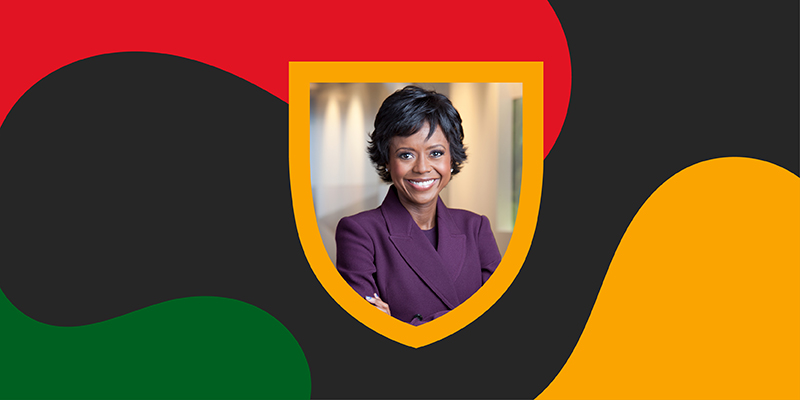
Mellody Hobson
Chairman of the Board of Trustees, Ariel Investment Trust
Co-CEO & President, Ariel Investments
Chair of the Board, Starbucks Corporation
As Co-CEO of Ariel Investments, Mellody Hobson is responsible for the management, strategic planning, and growth for all areas of the company outside of research and portfolio management. Additionally, she serves as Chairman of the Board of Trustees of the Ariel Investment Trust—the company’s publicly traded mutual funds. Prior to being named Co-CEO, she spent nearly two decades as the firm’s President. Outside of Ariel, she is a nationally recognized voice on financial literacy. Her leadership has also been invaluable to corporate boardrooms across the nation. She currently serves as Chair of the Board of Starbucks Corporation, and is also a director of JPMorgan Chase. Her community outreach includes her role as Chairman of After School Matters, a Chicago non-profit that provides area teens with high-quality after-school and summer programs. She is a member of the American Academy of Arts and Sciences, The Rockefeller Foundation Board of Trustees, and serves on the executive committee of the Investment Company Institute. In 2015, Time Magazine named her one of the “100 Most Influential People” in the world.
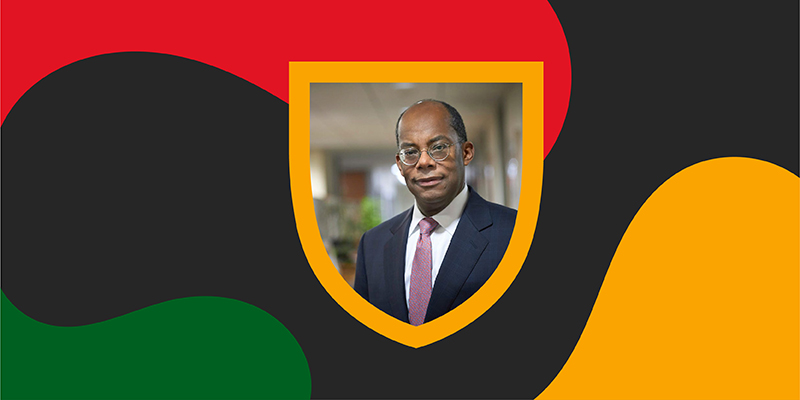
Roger W. Ferguson, Jr.
Former CEO, TIAA
Former Vice-Chair of the Federal Reserve
Roger W. Ferguson Jr. is an American economist who served as Vice-Chair of the Federal Reserve from 1999 to 2006 and is the former President and Chief Executive Officer of the Teachers Insurance and Annuity Association – College Retirement Equities Fund (TIAA). He is currently a member of the Board of Directors of Alphabet, Inc. Between 2008 and 2012, Ferguson served as an economic advisor to President Obama, initially as a member of the President-elect's Transition Economic Advisory Board and subsequently as a member of the President's Economic Recovery Advisory Board and the President's Commission on Jobs and Competitiveness. Ferguson has co-authored, edited, or led study groups or commissions that have produced numerous publications, including monographs, occasional papers, study group reports, and commission reports Alan Greenspan has called Ferguson "one of the most effective Vice Chairmen in the history of the Federal Reserve."
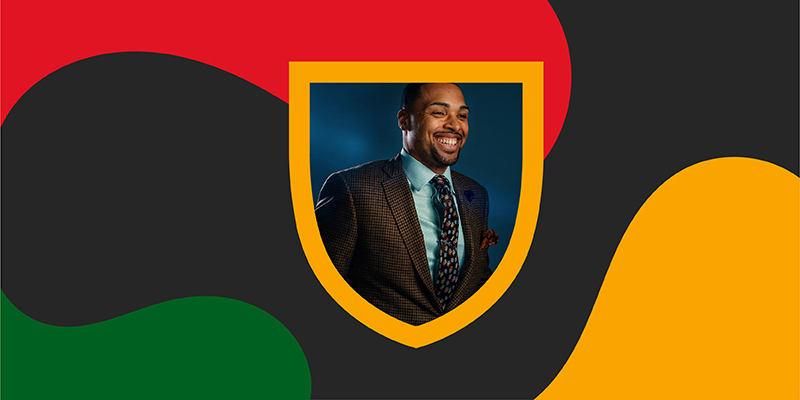
Tyrone Ross, Jr.
CEO and Co-Founder of Onramp Invest
Tyrone Ross Jr. is a licensed investment advisor and the CEO and Co-Founder of Onramp Invest. He is a powerful storyteller with a passion for digital assets and their ability to disrupt our current way of life. He was recognized by Investment News 40 under 40 (2019), and WealthManagement.com as a top ten advisor set to change the industry in 2019. FinancialPlanning.com named him as one of 20 people who will change wealth management in 2020. He was also recently named as Investopedia’s Top 100 financial advisors, and Think Advisor’s 2021 IA25: VIP’s Pushing Advisors Forward.
Uncover the Meaning Behind Wealth with A Spectrum of Legacies
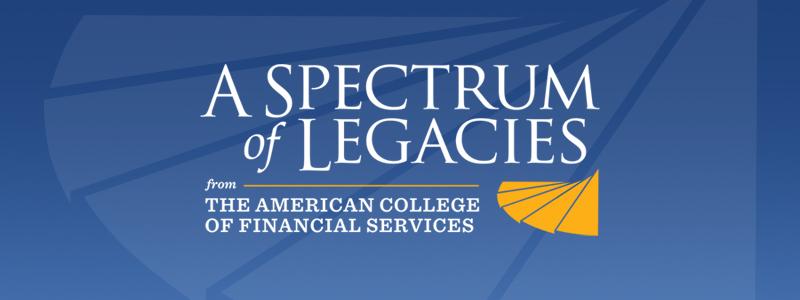
I was introduced to legacy planning when I read a book by an alumnus of The College's Chartered Advisor in Philanthropy® (CAP®) program, Mark Weber, CAP®. The book, The Legacy Spectrum: Passing Your Wealth With Thought And Meaning, compelled me to think beyond estate planning regarding our legacy. My wife, CJ, and I were introduced to activities that enabled us to have more profound, more meaningful conversations with our adult children on the subject.
Mark's insights and process left a mark on us. So much so that I felt compelled to bring Mark's unique approach to life through The College's technology platform and instructional design capabilities and made a personal commitment to achieving this end.
I'm excited to share that A Spectrum of Legacies is here and available to all - financial professionals and consumers alike!
This free consumer philanthropic education program serves many purposes. First, it helps you strengthen family ties and prepare your children to receive wealth. Next, it facilitates an exploration of incorporating philanthropy into your legacy planning to pass your values to your children and make a lasting difference in the lives of others.
I hope that many will participate in this program, uncovering a deeper meaning for their wealth and a new purpose for their wealth to be shared, positively impacting the future of their families and others. I invite you to enroll in A Spectrum of Legacies, share it with your families, and then introduce it to your clients!
Ethics In Financial Services Insights
"Materiality" May Be the Key to Getting Stakeholder Capitalism to Work. But What Does It Mean?

The future of ESG – integrating environmental, social and governance factors in investing – appears to hinge on the concept of “materiality.”
Securities and financial regulators in the U.S. are debating whether and how to guide the disclosure of information relating to corporate ESG activities. European regulators have already taken action, providing guidance through the EU Non-financial Reporting Directive and the Sustainable Finance Disclosure Regulation, among a number of other rules. For the U.S. SEC, if they are to mandate disclosure of certain corporate activities relating to ESG, an analysis of whether those items are “material” to a reasonable investor has become the analytical lynchpin.
Yet, the definition of materiality is and always has been slippery. Current law appears to require, at a minimum, that companies shall disclose all matters, including ESG matters, that are material to a reasonable investor. What constitutes “material,” “reasonable,” and even at times “investor” isn’t always clear.
Regulators are important to the durability of ESG as an investment strategy because mandatory rules or guidance can help mitigate greenwashing, pushing companies to ensure that their communications, reports, and other formalized disclosures accurately reflect their actual business practices and strategies. Moreover, investors will be able to access comparable data about the intangibles in business, sometimes called non-financial behavior, which will help them differentiate among companies’ abilities to manage these emerging risks.
What’s at stake is whether advocates for ESG can provide a defensible rationale for why activities or decisions that used to be considered externalities in business are indeed issues that companies should be responsible for in their own operations. These externalities include environmental issues like greenhouse gas emissions, as well as labor rights and fair wages, among a host of other topics. Many of these areas are not directly regulated on the substance, and therefore securities regulation could impose duties above and beyond existing laws.
Employee satisfaction is a good example in this context. While historically companies considered it nice to have satisfied employees – a happy worker can be a harder worker – labor was primarily viewed as fungible and secondary to other strategic assets. Companies today, however, increasingly view employee retention as a key priority. Even before the pandemic’s impact on tight labor markets, competition for qualified workers was on the rise. Thus, the salient question for corporate disclosure is whether employee satisfaction and retention are “material” to business operations, as has been demonstrated by academic research.
Despite evidence of the link between employee satisfaction and company performance, when it comes to human capital disclosures, few companies disclose meaningful information to satisfy investor needs. Some will cite practices such as their employee surveys or corporate values statements about respect and compassion. But this hasn’t satisfied investors, who continue to ask for more specificity. The information they seek is arguably not so onerous. The Human Capital Management Coalition, a cooperative effort led by a number of investors and asset managers, has boiled it down to four foundational reporting elements, such as the total number of employees (including independent contractors), employee turnover/retention rate, the total cost of the workforce, and diversity data.
Among the SEC Commissioners who have recently opined on materiality, Commissioner Pierce has made the point that there isn’t a need for additional SEC rules on this topic. She indicates that “if ESG opportunities are driving management decision-making, our existing disclosure rules also pull those in.” Others, such as past Commissioner Roisman have also indicated his view that materiality should be the “touchstone” for additional disclosure guidance from the SEC, but questions whether the market is mature enough for SEC guidance to meaningfully address needs beyond the information already available.
This view, that material ESG information from corporate issuers is already mandated, seems to be accurate in principle. For example, Regulation S-K requires that the company disclose its sources of raw materials, its competitive position, or pending legal proceedings, other than routine litigation. Additionally, the 2010 SEC Guidance Regarding Disclosure Relating to Climate Change should have helped address some gaps relating to whether and how environmental and climate matters are material risks for investors.
Commissioner Lee, however, believes that it’s a myth that the securities law imposes a spontaneous obligation on companies to disclose all ESG matters, or indeed all general matters material to investors. She advocates that the market needs guidance relating to ESG matters such as climate change and human capital management because “there is no general requirement under the securities laws to reveal all material information.” Moreover, even when there is a duty to disclose a specific item, business managers and their lawyers and auditors must judge what rises to the definition of materiality. Thus, further guidance on these emerging risks is warranted.
The Department of Labor (DOL) proposals on ERISA plan fiduciary’s responsibilities with respect to ESG also suggests that there is a lack of clarity among market participants. The October 2021 DOL proposed regulations state the Department’s view that “in many instances … an evaluation of the economic effects of climate change on the particular investment or investment course of action” is required. This could be interpreted as a requirement that the impact of climate change on all plan assets be calculated and considered. The DOL has made it clear that use of plan assets to further political and social causes is prohibited, thus requiring that any analysis be limited to financially material impact.
Even if there were consensus that mandatory disclosure of material ESG risks is warranted, the concept of materiality can prove elusive. The prevailing SEC definition, which has endured since a U.S. Supreme Court decision from the 1970s, is more of a general principle rather than a specific requirement. The principle is that managers should disclose information if there is “a substantial likelihood” that it “would have been viewed by the reasonable investor as having significantly altered the ‘total mix’ of information made available.”
Moreover, there are emerging qualifiers around materiality today, such as economic materiality, qualitative materiality, double materiality, and dynamic materiality. Some, like economic materiality, assess impact of a matter on the company’s financial situation, while double materiality considers effects both on the company as well as on people and the planet. The latter concept of double materiality has been embedded into the EU Non-financial Reporting Directive, which established principles for reporting of corporate sustainability information in Europe. In addition, ESG is an umbrella for a number of disparate issues ranging from human rights to labor rights to climate change, not all of which can be consistently boiled down to quantitative and material risk.
What’s clear is that investors seek more decision-useful information that could serve as leading indicators of whether a management team has a good grip on the uncertain future ahead. Whether those environmental and social challenges can be refracted through the lens of materiality remains on the U.S. regulatory agenda for the time being.
Is Your Culture Ready for DE&I Progress?

While the strides I mentioned above are significant, there’s another question we need to be asking in board rooms across America: "Is our culture changing in tandem with our efforts?" Without a resounding "Yes," we’re at risk of reverting over time to the status quo.
It's natural to want to celebrate progress, yet we need to be realistic about the stages of organizational transformation. Actual change takes months and often years. After all, DEI programs are not new; they date back to the 1960s, when workplace diversity training first emerged. And here we are, 60 years later, still just beginning to address race and gender leadership inequities in corporate America.
Triggering events spur new visions, yet converting fully to a new reality often falls short. Only through applying many lenses to our efforts, dedicating resources, and setting measurable goals can we reinforce and sustain meaningful change.
As we approach a new year, reflect on the past, and forge ahead with our DEI planning, I hope you will evaluate your own efforts in terms of actual cultural change. Were recent appointments of people of color and women made in tandem with developing new programs and pathways for continued leadership advancement, or were they long-overdue promotions given as a reactionary response to social unrest? What new DEI goals exist for your organization in 2022? How will you measure success and stay accountable for continued cultural change?
The College remains committed to helping drive transformational change in the financial services industry through research and program development. We look forward to another year of profound progress with those organizations committed to creating sustainably diverse, equitable, and inclusive cultures.
Gratitude and Grief

However, my gratitude is a companion to grief. Grief over the loss of life and destruction of so many places engrained deep in childhood memories across the western part of the state. As I've explored these emotions over the past several days, I've learned that when gratitude accompanies grief, we have the resilience to overcome life's unexpected misfortunes. It is in the crossing of gratitude and grief where compassion lives.
Francis Well, a well-known author and psychotherapist, has said, "The work of the mature person is to carry grief in one hand and gratitude in the other and to be stretched large by them. How much sorrow can I hold? That's how much gratitude I can give. If I carry only grief, I'll bend toward cynicism and despair. If I have only gratitude, I'll become saccharine and won't develop much compassion for other people's suffering. Grief keeps the heart fluid and soft, which helps make compassion possible."
As stories from the survivors continue to emerge, gratitude is pervasive. If you watch the interviews of people standing in front of their destroyed homes, you'll hear, "I'm lucky I'm still alive" or "Thank God, I was not home when the tree went through my house."
The texts from my niece are the same, filled with gratitude even at not having power restored until all the missing people in her neighborhood were found. "I just wanted to let everyone know my power is restored. I can come back home, but I want to say, God knows what's best for us all! He knew "mentally" I couldn't come home every day riding past the area where people were still missing. The last little girl was found yesterday near the creek by my house. I don't always understand his ways, but I have to trust HIM!"
As Bowling Green and other communities contend with what they have lost over the days, weeks and months ahead, grief balanced with gratitude will sustain them and enable them to look ahead to the future.
My intense feelings of gratitude extend to you this holiday season. I wish you a healthy, happy, and safe holiday with those you hold dear! Thank you for your continued support of The College, our mission, and our vision.
Here is a link to the Team Western Kentucky Tornado Relief Fund for those looking for a way to help those impacted by the tornadoes.
Our New Year's Call to Action
Our call to action remains to deliver relevant programming and thought leadership on which financial professionals can build and maintain trust with their clients.
And as a new day approaches, we will guide an industry forward to create new and lasting relationships with communities too long left underserved for the benefit of all society.
Watch my two-minute video eagerly anticipating the opportunities and possibilities ahead.
Happy New Year!
The Critical Role of Sponsorship in the Pursuit of Economic Justice

Dr. King relied on his mentors to help him identify opportunities for growth in his strategy and guidance in advancing the civil rights movement. One of them was Ralph Bunche, an American political scientist, diplomat, and the first African American to receive the Nobel Peace Prize for arranging a cease-fire between Israelis and Arabs in the Palestine conflict. Bunche advised Dr. King to work hard toward actionable steps, avoid being too critical and always in the public's eye, and welcome disparate views before making a final decision.
Different times may call for different measures. Bunche's advice to Dr. King to "lay low" may not be what he would advise today, yet his wisdom was invaluable and based on his experience in Washington. Having the advice of those who have gone before is critical in navigating unknown territory.
For Black mid-level executives, the unknown territory is the senior level of financial services organizations. The ability to be introduced to and build connections with senior executives is significant to those pursuing career advancement. Yet how do you advance if you cannot connect with those who have successfully gone before?
Implicit racial bias embedded deep within organizations has too often obstructed the ability for Black professionals to gain access to the highest levels within organizations. Black executives have not benefited from advocates vouching for their value, contributions, and promise, nor have they been able to form the relationships needed to glean insights for maneuvering organizational politics. Both serve as catalysts for promotion–and this is where mentorship shows its limits.
Mentorship is needed for advice; sponsorship is needed for advancement. Sponsors invest much deeper in relationships with their proteges by consistently guiding their professional development and advocating for their success.
In March, the Center for Economic Empowerment and Equality will conduct its first Black Executive Leadership Program, with a primary purpose of advocating for the success of the mid-level executives who will make up the program's fellows. The program's success relies heavily on a commitment from senior-level executives, serving as sponsors, to assist in the fellows' professional development and advocate for their advancement. The program helps build long-lasting relationships that will work to advance Black professionals and expand the perspectives of senior-level executives.
I look forward to sharing more about the Black Executive Leadership Program in the months ahead. Together, we can turn Dr. King’s dream of social and economic justice for Black Americans into reality.
Five Critical Considerations to Advance Financial Literacy
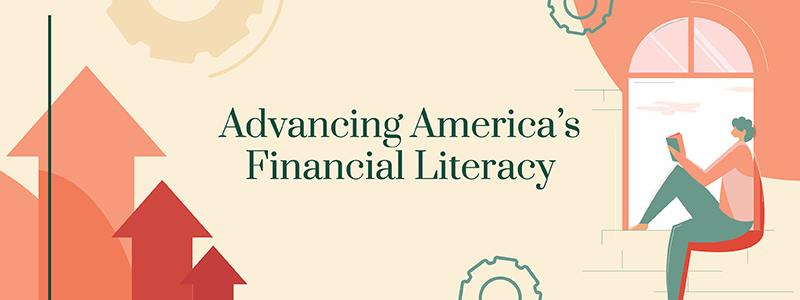
Like many challenges facing society, a silver bullet solution to remedy America’s lack of financial knowledge doesn’t exist. Instead, a multi-pronged approach deployed on multiple fronts is needed to tackle the issue. As the preeminent leader in applied financial knowledge and education, The American College of Financial Services has always been committed to benefiting the financial well-being of society.
Since 1927, we’ve recognized that knowledgeable professionals best serve the public’s financial security. Today, we also acknowledge that consumers need increased financial knowledge to pursue advanced expertise and the services and products required for financial stability and wealth building.
In 2021, the American College Center for Economic Empowerment and Equality started executing a bold plan to close the wealth gap for all underserved communities, including Black, Hispanic, Asian and those living in rural America. The Center’s progress with Four Steps Forward has been steadfast. We’ve conducted critical research and developed innovative programs, including Know Yourself, Grow Your Wealth, an e-learning consumer financial education and empowerment program distributed in partnership with the Society for Financial Education and Professional Development, Inc. (SFE&PD).
As we continue to progress in our work, I’d like to share five critical considerations to help inform and shape other initiatives focused on increasing the financial well-being of Americans.
1. Economic Well-Being Requires Trust
Improving the financial well-being of underserved communities requires growth in financial knowledge and TRUST. Focusing on increasing financial knowledge without addressing distrust in financial services will only continue the cycle of poor financial engagement, which is necessary for increased financial stability and wealth building.
2. Evidence-Based versus Idea-Based Solution Development
There is no shortage of good ideas formed based on goodwill. Yet, good intentions are not enough to create lasting change. Research must inform solution development, ensuring the development of practical and effective solutions.
Before the financial services industry devises the services and products to connect with new demographics, they must first understand the needs and wants of these communities and where gaps exist.
The Center for Economic Empowerment and Equality released the Black Women, Trust, and Financial Services study in 2021 to inform the financial services industry of what is needed to build an advisory relationship with Black women. Research across The College continues to focus on delivering critical data for evidence-based solution development.
3. Education Rooted in Cultural Relevance and Context
America is a vast tapestry of cultures that shape our unique experiences and perspectives. For financial education to be relevant, it needs to be applied through a cultural lens, valuing the strength in difference and layered in context to bring greater meaning to students. Know Yourself, Grow Your Wealth was developed by applying the culturally specific lens of Black America and layered in context for young earners, those about to embark on their careers, and who want to learn how to make better financial decisions.
4. “That’s Me!” in Financial Services
Have you seen the videos of the young children watching some of the more recent Disney movies, turning to their parents, proclaiming, “That’s me!” Well, “That’s me!” is also needed in financial services. As people grow in financial knowledge and seek additional expertise, they will look to identify with those who best understand their wants, needs, and concerns—those who see the world through the same cultural lens they do. Increased representation in financial services will increase financial stability for all Americans.
5. Casting a Wider Net through Partnership
Your distribution model dictates demand for any new product, service, or solution. In January, Know Yourself Grow Your Wealth, developed in partnership with SFE&PD, launched at over twenty HBCUs with seventy student ambassadors who have completed the program and are actively enrolling participants on college campuses.
Know Yourself Grow Your Wealth continues to attract the interest of corporate sponsors looking to grow in diversity, along with colleges and universities eager for a solution to address the need for increased financial education on their campuses and in their communities. As we continue to develop much-needed consumer financial education programs, partnerships are critical to cast a wider net.
I invite you to learn more about Know Yourself, Grow Your Wealth and look forward to sharing updates as the Center for Economic Empowerment and Equality progresses in its work to increase financial literacy in underserved communities across the country.